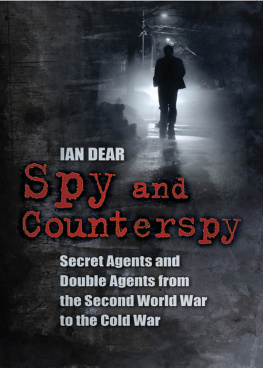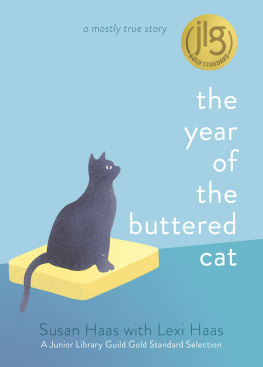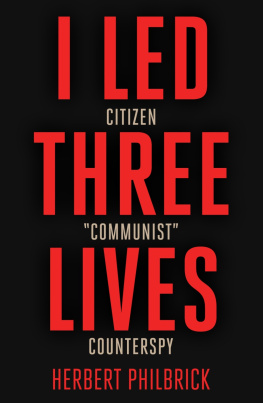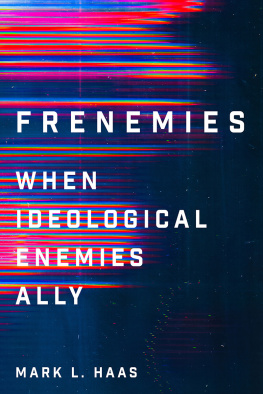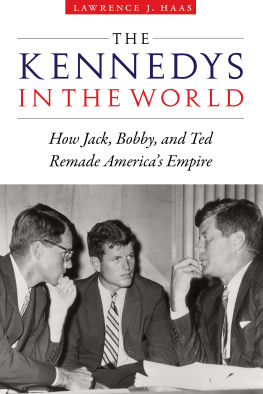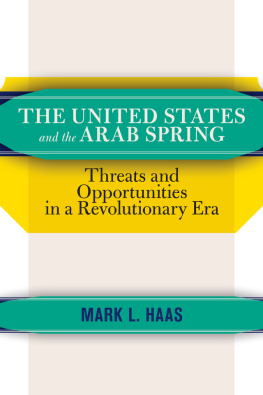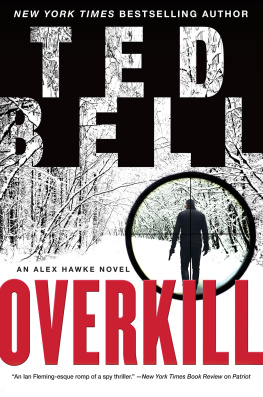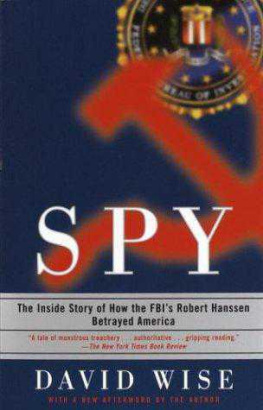If history were taught in the form of stories, it would never be forgotten.
Rudyard Kipling
They tried to kill me seven times.
I didnt really know if they were Soviet spies, American communists at their bidding, or the spys family bent on vendetta. But I do know the world of secret agents plays by deadly rules. As Larry Haass firstborn child, that birth order fact haunted me for the rest of my life. It was significant in the culture of my fathers enemies.
My father We spoke to no one about such things. The FBI wanted it kept quiet. While my father continued his own career, he worked with the Bureau, too, but always under that ongoing cover of silence.
In his secluded cabin in the hills of Western Pennsylvania, near the end of a life of audacious plans tangled with unintended consequences, my father made a dire forecast about the world as he had come to know it. He predicted that the conflict between the worlds greatest military powersthe Cold War between the United States and the USSR that had consumed most of his lifewould not end in peace by the twenty-first century. Instead, the hostilities would move in ever more dangerous directions. He had watched the United States, the USSR, and other world powers wage proxy wars through opposing sides in regional wars. My father believed such wars merely shielded the superpower homelands from bloodshed on their own soil. The rest of the world would be their battlegroundand booty for the victor.
So, this story, played out between two men and two great powers, is really two stories separated by fourteen seconds. Thats all the time it took for Andrei Ivanovich Schevchenko to utter his threat of vengeance. I became a means by which that threat was to be carried out. That made this my story, too, and I promised I would tell it. I am the last person alive who knows it.
In his last hours, on November 27, 1989, I sat beside Dads bed with him and his wife of nearly twenty good years. In the fading twilight of that rainy Monday afternoon, as a cold autumn wind moaned among the treetops above his home, my father found a measure of comfort in proposing one last plan from his deathbed. It was no less audacious than all the others that had shaped his life.
Its time to tell my story, Kay. He left his life in my hands.
I gave him my promise. And I kept it.
By the time we started to write about Americas first civilian counterspies, Kay Haas had spent many years amassing notes, clippings, volumes of declassified FBI documentation, and a small library of books that rarely contained more than glimmers of her fathers role in the spy sagas of WWII. But Kay knew there was more to tell than historians yet knew. She and her father had lived it. First-person testimony of such events was rapidly disappearing beyond the horizon of living memory, and Kay began to fear that her fathers story would soon fade into historys night as well. And she had a promise to keepthe promise she made at her fathers deathbedto tell the world about his life.
Her experiences in keeping that promise, however, had revealed that a complex tale like Larry Haass, spanning years and myriad places, was unlikely to succeed through long-distance, impersonal relationships with writing and research partners. So our first acknowledgment goes to the Rotary International Club of Jamestown, New York, where we had met long before and shared many a luncheon and fellowship with our neighbors and community leaders. When conversation and a rough draft by Kays husband, Lee, revealed that this small, dignified, and intelligent woman had once been thrown from a car by kidnappers, smashed the nose of a Russian thug, and survived a brief marriage to an underworld goon, there seemed only one possible path leftlets write the book. Rotary, it says in their Four-Way Test, builds better friendships, and that would be a place to start.
We also offer special thanks to the Niagara Aerospace Museum in Niagara Falls, New York, and its well-curated, carefully maintained Bell Aviation archives. Particular thanks go to archivist Ray Meissner, to Hugh Neeson, retired vice president at Bell Aircraft and museum education director, and to docent Walter Lechowski.
Additional information about Bell Aviation was generously provided by late friend Dick Harms, a longtime Bell engineer whose team designed and built the ascent engine that lifted Apollo-11s crew off Tranquility Base on July 21, 1969. At 17:54:00 UTC (Coordinated Universal Time) that night. Dicks team notched another Bell milestone in flight in the same spirit that the Bell-GE team with Larry Haas had a scant quarter-century before.
We are also deeply indebted to many others who have researched and written about spies, Soviet and American in particular, and their spy craft during WWII and onward into the early Cold War years. Many have been generous with their time in lengthy conversations and careful reading and critique of selected excerpts and early draft material. They offered valuable insights and sources for additional enrichment of the final manuscript. Jack Barsky, author of the autobiographical book Deep Undercover, lived the secret life of a Soviet spy in the United States for many years. He helped us understand the severe handicap placed on Andrei Schevchenko by not training hima man by nature unsuited to the task he had been givenand by the trauma of operating under the coercion typical of Stalinist-era intelligence gathering. Barnes Carr, also a scholar and author examining that era, offered many useful insights on the nature of Soviet espionage in the United States and other key players here and abroad. David Chambers, grandson of Whittaker Chambers, offered important insights on the nature of Soviet espionage networks and suggested key additions to our research concerning Schevchenko. John Earl Haynes shared recollections concerning Schevchenko, his network, and others of its kind in the United States during WWII based on his own extensive research. Katherine A. S. Sibley provided the most complete account of Haass activities with Schevchenko and confirmed our finding that most resources concerning the Haas/Schevchenko case are sparse and incomplete. Larry Loftis shared his experience, similar to ours, in working from detailed archives and first-person accounts. As an acclaimed journalist, he offered valuable guidance concerning the authenticity of accurate quotations and its distinction from use and disclosure of dramatically reconstructed dialogue.
We also thank author and renowned bibliophile Arik Bjorn, for insightful and discerning analysis of draft manuscript material during the preparation of The First Counterspy. Thanks also to Bev Johnson (Quick Solutions) for preparing multiple draft manuscripts for first-reader reviews throughout the process.
Members of Kays familysister Judy, son Denny, cousin Caroline, nephew David McMahon, and husband Leeall very generously contributed their time, reading, insights, and recollections, and especially their love for Kay, in compiling this work.
No book about aviation could be credible without a pilots insights, especially one whose long and decorated career included flying the latest, hottest jet-powered warplane descendants of Larry Haass child, the venerable Bell P-59. In our case, we thank good friend Commander John Watkins, USN (ret.), having flown from land, sea, and maybe most important of all, the Robert H. Jackson Airfield at New Yorks Chautauqua County-Jamestown Airport.
Early draft readers providing invaluable suggestions and critique included Walts son, Dr. William Pickut; daughter, Dr. Catherine Lamberton; sister, Marianne Sorensen-Sack; and local writer-journalist Bob Houston. Most writers have a day job, too, so special appreciation goes to Stacey Hannon, founder, owner, and publisher of the




